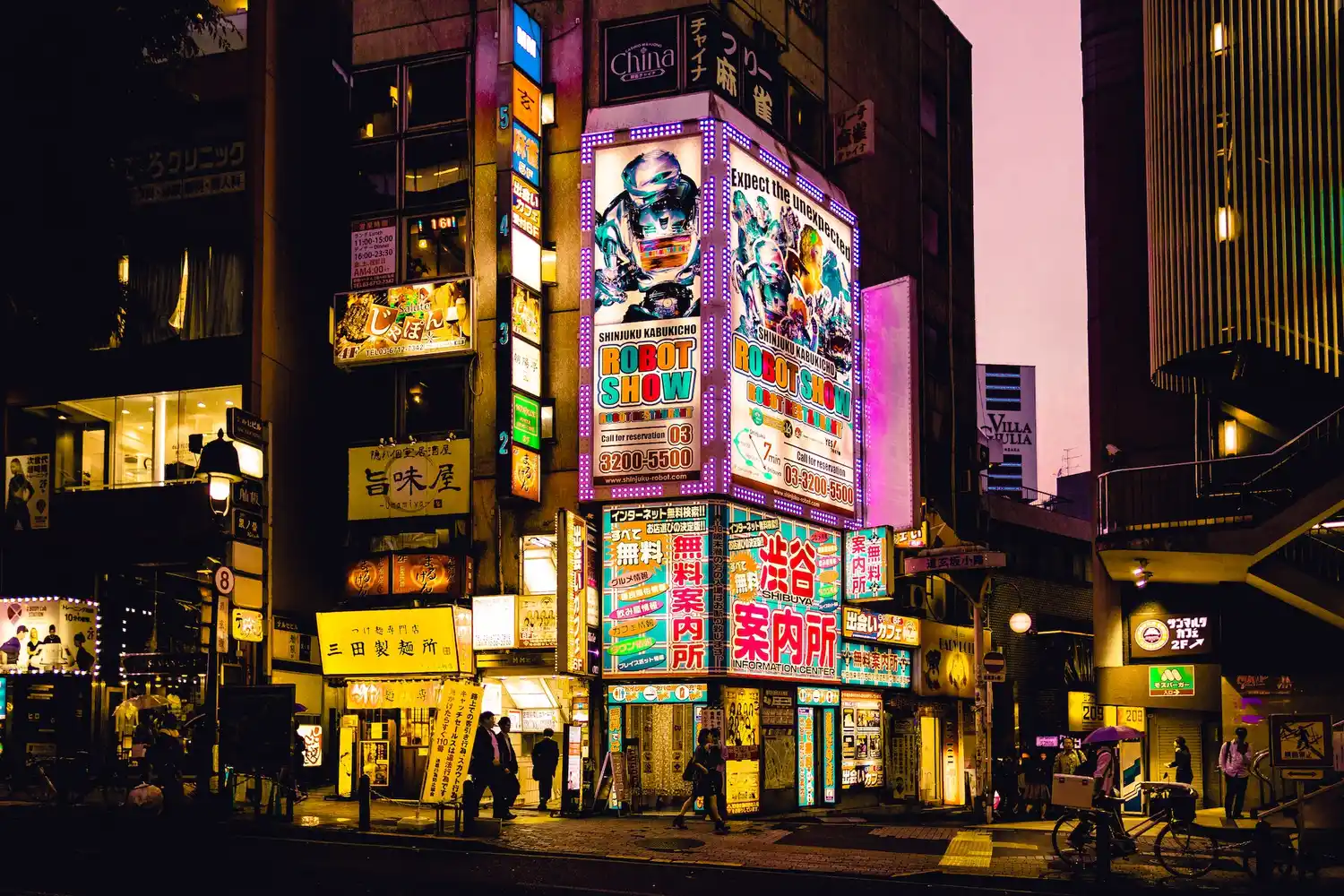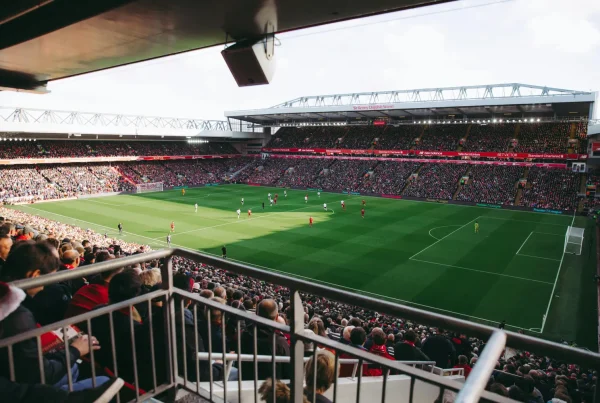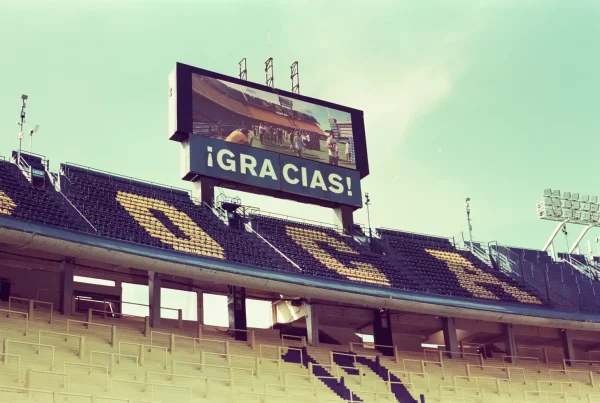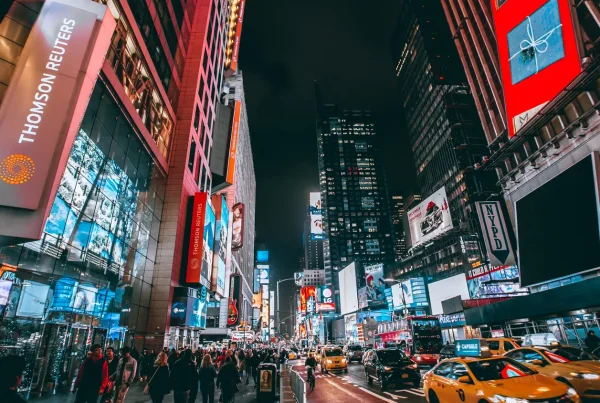What Is Event Signage?
Event signage refers to the use of signs, displays, and digital screens at an event. Their purpose is to enhance events by providing information, guiding attendees, and promoting sponsors.
The evolution of technology has greatly expanded the capabilities of event signage, with digital options offering real-time updates, customization, and increased audience engagement.
LED Event Signage: 8 Reasons Why It Works
Now that we’ve covered what event signage is, are you ready to delve into the benefits of using LED event signage?
If so, keep reading to learn the top 8 reasons why digital display signage is an essential investment for your next event.
PS To learn more about the benefits of custom LED displays, check out the linked resource.
1. Digital Event Signage Helps You Stand Out
Most businesses use regular event signage. LED event signage is also frequently used, as it offers several benefits that help your event stand out from the competition.
Usually, passersby in a crowded area aren’t going to pay a lot of attention to regular signage. But an LED sign, especially if it’s at eye-level, is more likely to attract interest, thanks to its colorful displays and fluid animations.
Additionally, the high contrast and brightness levels of LED displays make the content more legible and visible from a distance. This ensures that your event signage stands out, regardless of the size of the venue or the lighting conditions.
2. LED Event Signage Lets You Share And Update Schedules
One of the key benefits of LED event signage is its ability to display real-time updates and changes to the event schedule. This feature is invaluable for organizers who need to make last-minute adjustments or share urgent announcements with their attendees.
This ability to quickly and effectively communicate vital information eliminates the need for reprinted materials (which wouldn’t be practical to produce on short notice) and reduces the risk of confusion for your guests.
3. LED Event Signage Is Easy To Read
The customizable nature of LED displays allows for neat and organized layouts that clearly present event details, such as session times, speaker names, and venue locations.
Since LED event signage can incorporate graphics, colors, and dynamic content, they allow event organizers to create displays that are useful and easy to read.
4. LED Event Signage Offers More Sponsorship Opportunities
LED event signage is a powerful tool for event organizers, not just for its visuals but also for the wealth of sponsorship opportunities it presents.
One of the primary advantages of LED event signage for sponsors is enhanced visibility. With bright, vibrant colors and eye-catching animations, LED displays ensure that sponsor messages and logos are prominently featured and noticed by attendees.
This increased exposure can make sponsorships more appealing to potential partners, as it maximizes their return on investment and brand visibility.
Moreover, the customizable nature of LED event signage allows for tailored sponsorship packages that cater to the preferences of each sponsor.
With LED signage, event organizers can offer varying levels of exposure, such as dedicated signage, rotating ads, or even interactive displays.
Track and Measure Performance
Another benefit of LED signage (interactive) is that it can help event organizers track and measure the performance of sponsorship campaigns.
Digital signage analytics is a powerful tool, one that allows organizers to offer the best promotions possible to sponsors.
The data provided by digital signage analytics includes viewer impressions and engagement rates, which can help sponsors evaluate the effectiveness of their investments and make informed decisions about future event partnerships.
5. LED Event Signage Tells Your Attendees Where Things Are
LED event signage is useful for guiding guests to specific areas, such as registration booths, conference rooms, restrooms, exhibition halls, and dining facilities.
With their bright displays, LED signs are effective as wayfinding points, especially when they incorporate helpful elements like arrows, icons, and color-coded sections.
Additionally, LED event signage allows organizers to make real-time updates and last-minute changes to the event details.
6. LED Event Signage Is Highly Customizable
LED event signage offers you the flexibility to create signs in various shapes, sizes, and configurations so that you can tailor the sign to meet your needs. This adaptability ensures that your event signage is truly one-of-a-kind.
LED signs support a range of content formats, such as text, images, videos, and animations. This enables you to create dynamic and engaging displays that grab the attention of your audience.
7. LED Event Signage Is Reusable
One of the most notable advantages of LED displays is their remarkable durability and longevity, making them an ideal, cost-effective choice for event organizers.
With their ability to withstand various environmental conditions and resist wear and tear, LED signs can serve as long-term investments that yield considerable returns.
Furthermore, the ability to reuse and repurpose LED signs for multiple events is a significant boon for event organizers, as it allows them to maintain a consistent and recognizable brand identity across different occasions.
8. LED Event Signage Can Be Interactive
LED event signage can be used to create a more immersive and engaging experience by incorporating interactive elements, such as touch screens or QR codes.
These features can enable attendees to access additional information about specific sessions, speakers, or exhibitors, as well as receive personalized recommendations based on their interests and preferences.
FAQS
What Are The 13 Types of Signage Used At An Event?
Directional Signage – These signs guide attendees through the event venue to various points of interest, such as entrances, exits, restrooms, and conference rooms.
Informational Signage – These signs provide essential details about the event and include things like schedules, maps, rules, Wi-Fi information, etc.
Branding Signage – These are used to promote the event and often include logos, taglines, and creative graphics.
Sponsor Signage – These signs highlight the event’s sponsors and may display their logos, products, or promotional messages.
Digital Signage – This includes LED displays, digital kiosks, and interactive screens that can display dynamic content, such as interactive maps.
Stage Signage – These signs are used on or around the stage to promote the event, the host organization, or the sponsors. They also help set the tone for the event’s theme.
Banners and Flags – These are large-scale signs used for branding, promoting sponsors, or creating a festive atmosphere.
Tabletop Signs – These are smaller signs often used in dining areas or trade show booths to provide information, promote a brand, or highlight a product.
Floor Graphics – These signs are placed directly on the floor and can serve a dual purpose as both directional and promotional signage.
Backdrops – These are large displays often used as backgrounds for photo opportunities, press interviews, or stages.
Safety Signage – These signs provide important safety information, such as emergency exits, first aid stations, and fire extinguisher locations.
Interactive Signage – These signs engage attendees through touch screens, QR codes, or augmented reality.
LED Marquees – These digital signs can be updated in real-time and often display a scrolling text of announcements or greetings.
How Effective Is Digital Event Signage?
Digital event signage has proven to be an effective tool for enhancing events for a number of reasons. Primarily, though, it catches the attention of attendees.
The dynamic nature of digital event signs makes them hard to miss, which is why they’re such a powerful tool for conveying information or promoting sponsors.
Furthermore, interactive features like touch screens foster interest and promote engagement among attendees.
The effectiveness of digital event signage lies in its ability to:
Engage attendees, streamline event management, provide valuable sponsorship opportunities, offer actionable analytics, and create a visually compelling environment.
Its versatility and adaptability make it a powerful tool in any event organizer’s toolkit.
What Is The Difference Between Event Signage and a Billboard?
As mentioned above, event signage refers to the variety of signs used within a specific event, such as a conference, festival, concert, or trade show.
Event signage is also temporary, specific to the event, and intended for the audience attending that event.
A billboard, on the other hand, is an outdoor structure commonly found in high-traffic areas. It is designed to catch the attention of motorists and pedestrians over a longer period of time.
The content of a billboard is usually simple, direct, and designed for quick comprehension due to the transient nature of the audience.
While both event signage and billboards are means of communication and promotion, they differ in their purpose, location, audience, and duration.




